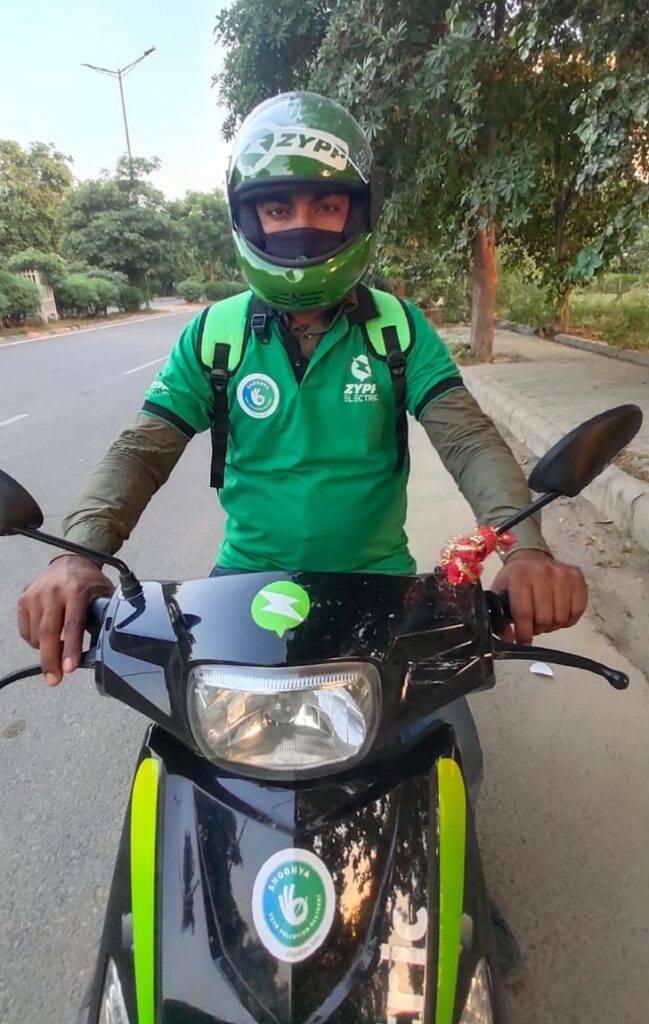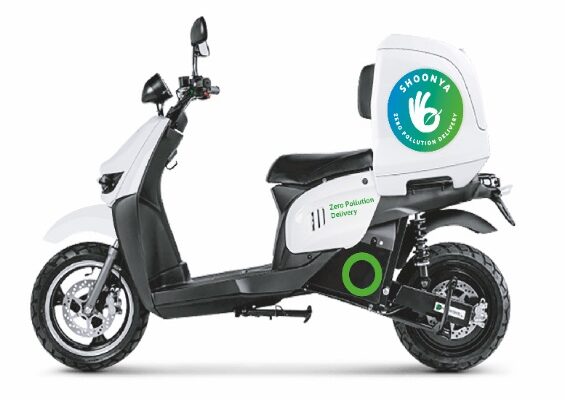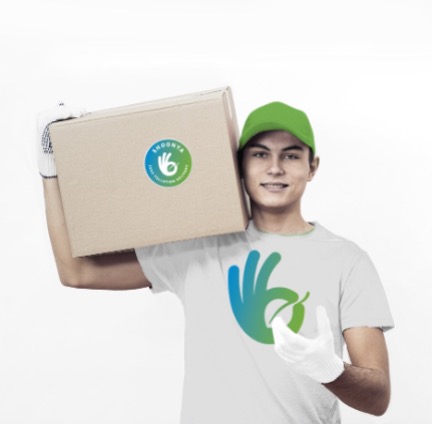Bringing Zero-Pollution Delivery in India to 100% Market Share with Shoonya
In the ancient language of Sanskrit, the word शून्यता or “Shoonya” signifies “zero,” “nothing,” and “infinite possibility.” It is derived from the root “svi,” meaning “hollow” or “empty.” So what does Shoonya imply in the context of electric vehicles and the urban freight sector?
When it comes to road transportation, there are nearly infinite benefits to choosing zero pollution electric vehicles, and the Shoonya campaign has recently launched in India as a leading model with an ambitious aim to transform last-mile deliveries. India’s NITI Aayog and RMI, a member of the Drive Electric coalition, are exploring how India is paving the way for zero-pollution delivery through electrification of urban delivery fleets with the Shoonya campaign. This can deliver huge benefits to the climate, health, and the economy, and be a model for other regions.
Freight Can Be a Front-Runner for Electrification

Across the electric vehicle (EV) ecosystem there are clear front-runners that are rapidly approaching cost parity with fossil fuel-powered equivalents. The key is unlocking the potential for these types of vehicles so they can create momentum for other segments and regions. This is true for last-mile delivery.
Last-mile delivery is the movement of goods from a transportation hub to the final delivery destination. And the urban freight segment is ripe for full scale electrification. E-commerce has changed the way urban residents in India get groceries, meals, medicines, and more. Last-mile delivery has increased convenience and efficiency, created jobs, and bettered the lives of mobility-impaired residents.
Yet if we rely on gas-powered vehicles, more deliveries could mean an increase in transportation pollution, which disproportionately contributes to air pollution and carbon emissions. A recent study in Delhi found that nearly 75% of children surveyed reported breathlessness, and that both the particulate matter and lead content in the air increased from 2019-2020.
At the same time, last-mile delivery accounts for more than 50% of total logistics costs for retailers in India.
Fortunately, a readily available solution exists. Electrifying last–mile delivery vehicles can reduce pollution, operational costs, and emissions, the benefits of which can be passed on to consumers and society. Simply put, electric last–mile delivery offers a win-win scenario: cost savings and emissions reductions. For many cities around the world, electric last–mile delivery fleets are a no-brainer and India is leading the way and showing how an entire country can shift to cheaper and cleaner deliveries.
The Shoonya Campaign
The Shoonya campaign is a collaboration between NITI Aayog — the Government of India’s premier policy think tank — and RMI with the goal of transitioning the entire urban delivery sector in India to electric vehicles before 2030.
Shoonya works to expand access to electric two- and three-wheelers in the urban delivery sector, such as the delivery vehicle shown below. These types of delivery vehicles are approaching cost parity with gas-powered vehicles due to the combination of their small size and high utilization. This means that the cost savings of using the vehicle (e.g., fuel, maintenance) quickly outweigh the slightly higher up-front cost to buy the vehicle.

Deploying a two-wheeler for urban logistics in India will save its owner USD $5,000 (INR 3 lakh) over its lifetime. For an aggregator or logistics company with a fleet of 500 electric two wheelers, this will imply savings of USD 2.5 million (INR 16.5 crore) over the operational lifetime of the fleet compared to a gas-powered fleet. Currently, both national and state policies include incentives that play a critical role in creating this economic advantage.
Shoonya was designed to engage policymakers, private companies, and consumers, showing that EV last-mile delivery can reduce reliance on imports of oil, improve urban air quality, and improve long-term profitability of delivery business models. The campaign is built on a corporate branding and certification program, an online tracking platform to track emissions reductions, and a consumer awareness drive. Every parcel that is delivered under the Shoonya campaign is branded with a “Zero Pollution Delivery” logo that links to an impact dashboard displaying the cumulative oil and emissions savings associated with the campaign. Shoonya aligns with the Government of India’s motivation for pursuing the electrification of transport to improve air quality, enhance energy security, and bolster industrial competitiveness.
Delivering the Benefits of Electric Transportation
The Shoonya campaign, launched in September 2021, has over 35 participating companies and is on track to achieve 10 million pollution-free deliveries by the end of 2021. A digital media campaign aims to reach 15 million households over the next three months, equivalent to reaching every household in Delhi, Bangalore, and Mumbai.
The campaign’s longer-term goal is to achieve 100% market share for electric two- and three-wheelers in urban delivery before 2030. This will translate to 14 million delivery EVs operating by 2035, which will generate cumulative savings of 163 million tons of CO2 and $80 billion in fuel costs over their operational lifetime.

Driving Shoonya’s Success
While the campaign is still in its stages of growth and development, there are plenty of lessons learned in India to share with other countries, states, and cities that are interested in replicating this model.
The early success of Shoonya can be attributed to sustained industry engagement across the urban freight sector. What started as a working group on final-mile electrification at the Urban Mobility Lab in Pune in 2018 grew to Deliver Electric Delhi, a pilot of 1,000 zero emissions vehicles in India’s capital in 2019. This in turn led to the national scaling of the effort through Shoonya.
Throughout this process, key partners continually focused on areas of common interests and shared benefits. This helped transcend competitive dynamics among vehicle manufacturers that may have otherwise inhibited action and participation.
A critical piece of the campaign’s success to date is the supportive policy environment coupled with a strong and committed government partner, NITI Aayog. For several years RMI and many partners worked to include freight vehicles in national and state-level policies. The eligibility of freight vehicles to receive incentives is critical to kickstarting this industry. And the convening power and policy role of government partners like NITI Aayog and state transport departments in Delhi and Maharashtra helped create strong interest and commitments from industry players.
Lastly, and yet to be fully proven, is a hypothesis that it is critical to engage consumers and empower the general public as a key stakeholder group. Shoonya aims to end pollution from urban delivery by connecting the dots between urban air quality improvement, e-commerce activity, and urban freight electrification in order to empower consumers and stoke demand for zero-pollution deliveries.
These three dimensions: private sector leadership, bold government policies, and citizen engagement, are designed to create a positive ambition loop that can accelerate action and realize the “infinite possibility” that Shoonya represents. While Shoonya has been launched in India, many key actors in e-commerce and urban delivery operate globally, and so there is an opportunity to leapfrog directly to a zero pollution delivery sector in a number of emerging markets that are experiencing significant demand growth for urban freight. Shoonya shows how engaging stakeholders across sectors can accelerate the electrification of final mile delivery around the world.
Photos courtesy of Shoonya. Follow @Shoonya_India on Twitter to stay up to date on this exciting campaign.
